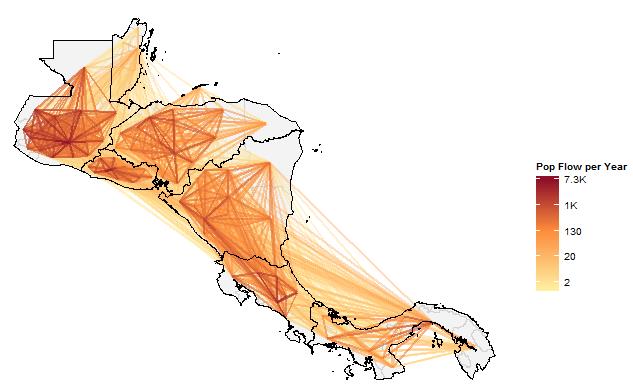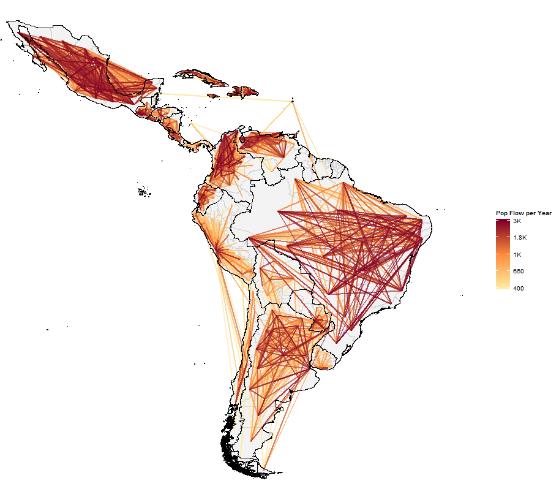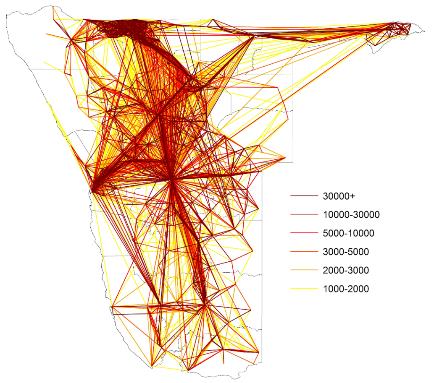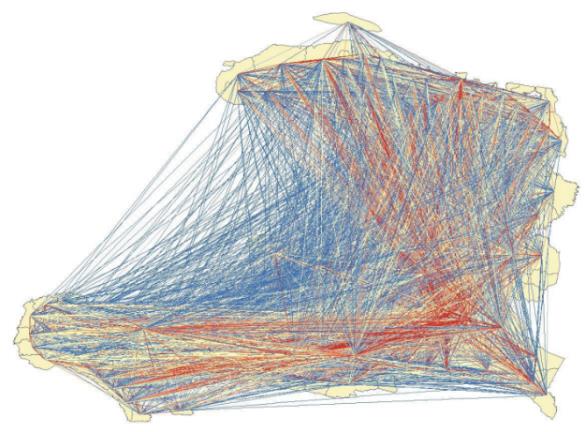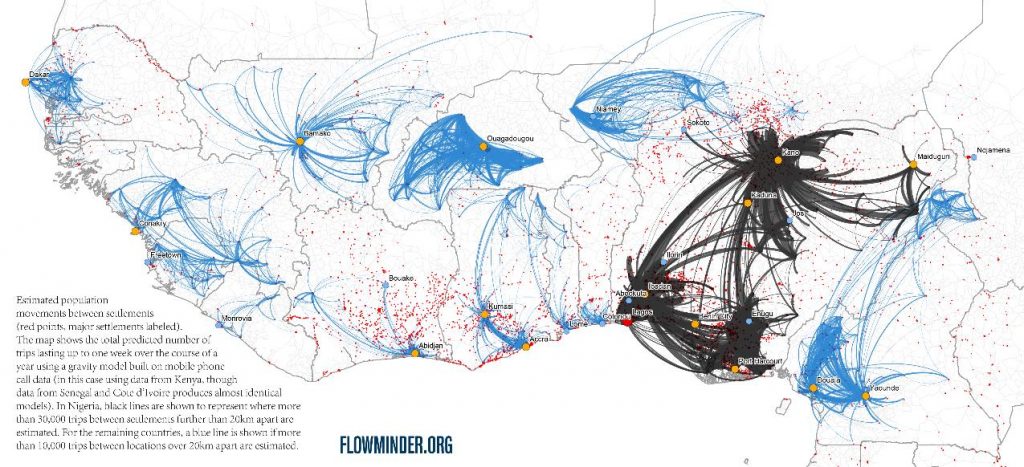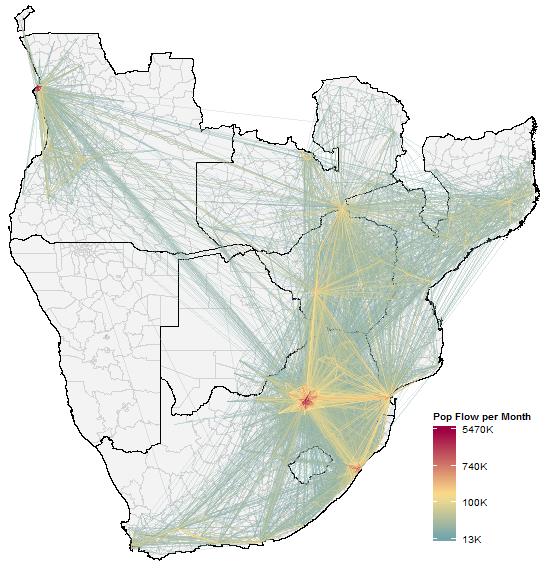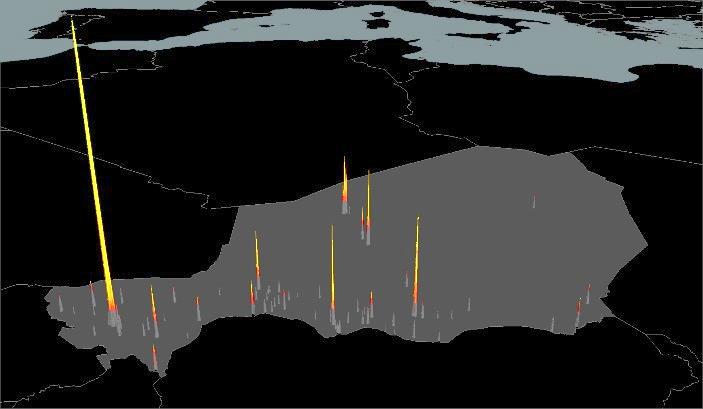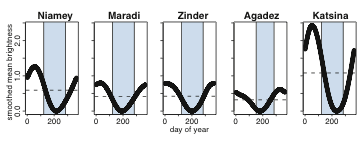Population movements and connectivity
A primary focus of WorldPop is ensuring that the methods developed and resulting output datasets undergo academic peer review. Therefore, to keep up with the latest methods, we recommend visiting our publications page. The methods outlined below are becoming outdated and have been superseded in some places – we are working to update these based on newly published papers.
Population movements and connectivity
Human movement typically has a central role in economics and development, the delivery of services, and the spread of infectious diseases. The progression of epidemics and maintenance of endemic diseases are strongly linked to human movement patterns, while access to markets and efficient transportation to increase workforce mobility and the flow of goods can drive economic development. Planning, intervention, mitigation, and development policies can be better informed through the incorporation of spatial information on human movement and connectivity across spatiotemporal scales, but reliable data for human mobility mapping have often been lacking, particularly in resource-poor settings. WorldPop works closely with its partner the Flowminder Foundation to fill these gaps, providing data and models on human mobility and connectivity in low and middle income settings.
Mapping migration
Globalization and the expansion of transport networks has transformed migration into a major policy issue because of its effects on a range of phenomena, including resource flows in economics, urbanization, as well as the epidemiology of infectious diseases. Quantifying and modeling human migration can provide a better understanding of the nature of migration and help develop evidence-based interventions for disease control policy, economic development, and resource allocation. WorldPop is constructing a database on international and domestic migration, as well as modelling approaches, to enable a consistent mapping of migration flows and connectivity across all low and middle income countries. Example outputs are shown below, and further details are available on modelling approaches and data comparisons.
Perhaps the most promising new source of data on population movement patterns is that derived from anonimized mobile phone call detail records (CDRs). The time of each call or text made by an individual and the location of the tower it is routed through are recorded by mobile network operators for billing purposes. Through analyzing sequences of communications and their locations, the movement patterns of an anonimized individual can be inferred. Across the full set of phone users subscribed to the network, the movement patterns of millions of individuals across time periods of years can therefore be quantified at the spatial scale of phone tower reception areas. With estimates suggesting that there are now more mobile phones than people on the planet and high ownership levels, even in some of the poorest and most remote places, such data offer an unprecedented source of information on human mobility. In partnership with the Flowminder Foundation and multiple mobile network operators across the globe, WorldPop is developing methods for understanding and modelling population movements at unprecedented spatial and temporal scales, as well as feeding into improving population and poverty mapping. The figure below shows example outputs, with applications already shown in the fields of malaria elimination, cholera modelling, rubella dynamics, mapping of treatment seeking, Ebola control, mobility prediction, disaster response, poverty mapping and dynamic population modelling. WorldPop is also providing ongoing support in mapping population displacements following the recent Nepal earthquakes, with data and reports available here.
The mobile phone data represent a valuable and unique datasource on human movements, but they also represent sensitive and biased datasets. WorldPop is therefore working to produce models that replicate the patterns seen in mobile data, while accounting for biases, as well as integrating data on human mobility from other sources. Where feasible, WorldPop and Flowminder are working to distribute freely these mobility estimates and models. Examples in support of the West Africa Ebola outbreak containment efforts can be found on the dedicated WorldPop page here, and for the Nepal earthquake response here, while the figures below show further examples.
Modelling global air passenger flows
The expanding global air network provides rapid and wide-reaching connections accelerating both domestic and international travel. To understand human movement patterns on the network and their socioeconomic, environmental and epidemiological implications, information on passenger flow is required. However, comprehensive data on global passenger flow remain difficult and expensive to obtain, prompting researchers to rely on scheduled flight seat capacity data or simple models of flow. WorldPop has collaborated with researchers at the Vector-Borne Disease Airline Importation Risk tool (VBD-Air, www.vbd-air.com) to construct open access modelled passenger flow datasets. Full details on the dataset construction methods for annual flows are here, and monthly flows here. The datasets are available to download on the WorldPop site, and a visualisation of annual flows is shown below.

